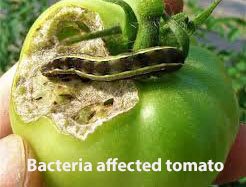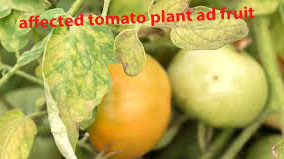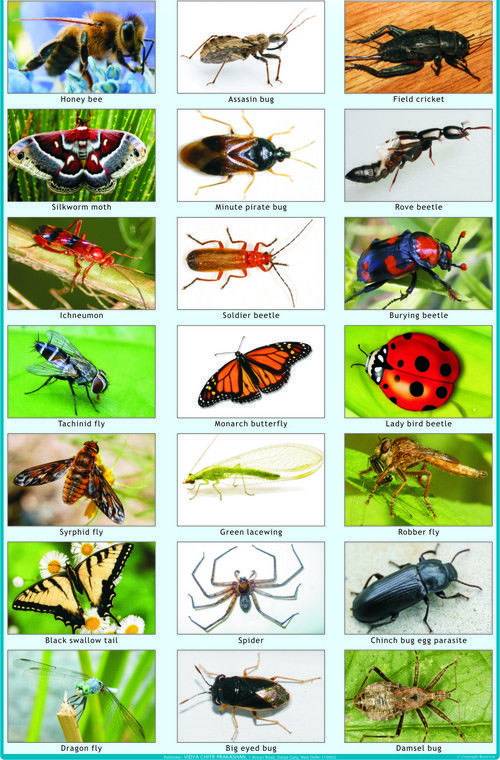1. Introduction to Tomato Plant Leaf Discoloration
Tomato plants are some of the most favorite plants among the plant lovers. However, they can face issues that may affect their productivity and health. One of these common problems is the tomato plant leaves turning brown. These problems can be a result of alarming issues in the tomato plants.
Understanding the reasons behind the tomato plant leaves turning brown can help gardeners take timely action to ensure the health and productivity of the tomato plants. Various reasons can be responsible for tomato plant leaves turning brown. These problems may include diseases pests, environmental conditions, and nutrient deficiencies.
It is important to identify the main cause behind the tomato plant leaves turning brown. Further damages can be avoided by timely action and gardeners can retain a vibrant, beautiful, productive, and healthy tomato plantation.

2. Common Causes of Tomato Plant Leaves Turning Brown
Various problems and issues are responsible for tomato plant leaves turning brown. Some of the main reasons are as follows:
- Nutrient Deficiencies:
Nutrient deficiency such as the lack of potassium, magnesium, and nitrogen can be the main reason behind the tomato plant leaves turning brown. Although every nutrient deficiency has its unique symptoms, browning is the most common.
Read More Missouri Botanical Garden:
Overwatering or underwatering can be another issue in the tomato plant leaves turning brown. Proper watering practices are important for adequate growth and productivity of any plant. Imbalanced watering practices can cause stress in the plants.
- Fungal Diseases:
Different diseases are responsible for the browning of tomato leaves. Early blight can be one of them. Septoria leaf spots are harmful to the tomato plants’ leaves. It will cause brown spots on the leaves and it will eventually lead to full browning.
- Bacterial Infections:
Bacterial diseases can also harm the plants. Bacterial leaf spots are very dangerous and can cause the problem of tomato plant leaves turning brown. This can be very harmful if not addressed on time.
- Pests infections:
Different insects can cause different problems in the plants. Pests such as aphids, and spider mites can cause damage to the leaves of the tomato plants. It will lead to discoloration of the leaves.

- Environmental Stress:
Inadequate environmental conditions can cause different problems in the plants. Insufficient light, poor soil, and extreme temperatures can cause the browning of the tomato leaves.
Identifying and finding the main cause of the brown leaves of tomato plants can help gardeners locate proper treatment and prevention. Locating the main problem that is the source behind the tomato plant leaves turning brown and removing it, will help the plant lovers to ensure the health, and productivity of the plant and ensure they thrive throughout the growing season.
3. Nutrient Deficiencies and Their Impact on Tomato Leaves
Nutrient deficiencies are the main cause of the tomato plant leaves turning brown. Every nutrient plays a unique and specific role in the plant’s health and productivity. The deficiency of the nutrient can cause different problems which have different symptoms. Browning leaves is one of the problems. We may have some nutrient deficiencies from the following that affect a tomato plant.
- Nitrogen Deficiency:
Nitrogen plays an important role in the leaves’ health. Nitrogen deficiency can cause the leaves to turn yellow and brown at the ages. The leaves then fully turn brown and fall off.
Potassium protects the overall plant from diseases and makes them resist any disease. Lack of potassium results in yellowing the leaves’ edges and eventually makes the tomato plant leaves turn brown.
- Magnesium Deficiency:
Magnesium plays a vital role in chlorophyll production in the plant. Lack of magnesium causes interveinal chlorosis. This problem causes the leaves’ veins to turn yellow and the leaves to turn brown.
- Calcium Deficiency:
Calcium is important for cell wall health and strength. Lack of this nutrient leads to rot and ends the blossom. This may cause the bottom of the fruit to turn brown. The fruit may rot and the leaves turn into brown.
- Iron Deficiency:
Iron helps in chlorophyll synthesis. The deficiency of Iron leads to the yellowing of leaves with green veins. In extreme conditions, it may be the cause of tomato plant leaves turning brown.
It is crucial to test the soil and treat it with balanced fertilizers to avoid any problems, prevent further diseases, and treat nutrient deficiencies. proper treatment and balanced fertilizers can help you recover tomato plants from nutrient deficiencies and ensure the health and productivity of the plants.
4. The Role of Watering Practices in Leaf Health
Watering schedules and practices are important for the health of tomato plants. One of the main reasons and causes of the tomato plant leaves turning brown can be incorrect watering practices. Understanding and employing proper watering practices can help plant enthusiasts prevent browsing leaves and maintain healthy plants.
- Overwatering:
Overwatering can lead to root rot and disable the plant to absorb oxygen and nutrients. Overwatering can be one of the main causes of tomato plant leaves turning brown and yellow. Symptoms of overwatering are soil being wet, wilting, and musty smell from the soil.
- Underwatering:
Insufficient water can cause stress in the plants. This will lead to crispy, brown leaves, edges, and tips. The symptoms of underwatering are drooping leaves and wilted and dry soil.
- Inconsistent Watering:
Inconsistent watering practices can cause stress in the plants. Irregular watering practices may cause dry and wet soil problems for the plants. The symptoms of inconsistent watering practices are browning leaves and cracking fruits.
- Water Quality:
Water quality matters while using it for plantation. bad quality can impact leaf health negatively. Water with a high quantity of mineral content can build up salts and soil which will lead to the tomato plant leaves turning brown.
Following these watering tips can help plant lovers maintain a healthy and vibrant gardening environment:
- Consistent Schedule:
Schedule your watering practices with proper care and water the plants consistently. Do not overwater or waterlog the soil but keep it moist.
- Deep Watering:
Make sure to water the plants deeply to encourage the roots’ growth but do not let the plants sit in water.
- Morning Watering:
Morning watering practices can be important for the plant. The leaves would dry out during the day and avoid fungal diseases.
Following proper watering practices, you can reduce the risk of tomato plant leaves turning brown. This will ensure the health and overall productivity of the plants.
5. Fungal Diseases Affecting Tomato Plant Leaves
Fungal diseases are also very harmful to tomato plants and are one of the causes of tomato plant leaves turning brown. These spread rapidly if not cured and treated on time. They can pose serious threats to the plants. Some of the major fungal diseases are:
- Early Blight:
As a result of and caused by Alternaria solani, small spots appear on the leaves due to early blight. The spots change into rings and finally, the leaves fall off as the disease gets stronger.
- Late Blight:
Phytophthora infestans cause late blight. It looks like water-soaked lesions on leaves. The leaves become brown and the plant collapses. This is very dangerous and spread fast.
- Septoria Leaf Spot:
As an effect of Septoria lycopersici, it affects the leaves with dark borders, circular spots, and gray centers. This results in tomato plant leaves turning brown and dying prematurely.
- Fusarium Wilt:
Infected by Fusarium oxysporum, this disease affects the plants from its roots. This causes yellowing and wilting of the leaves. The leaves turn brown and one side of the plant is affected at first.
- Anthracnose:
Anthracnose is primarily a fruit disease. Caused by Colletotrichum, this disease can cause brown spots on the leaves and stems of tomato plants. The plant will eventually collapse.
Different strategies and methods can be adopted to avoid fungal diseases:
- Crop Rotation:
Rotate tomato plants with different non-host plants to reduce the risk of fungal disease.
- Sanitation:
Prune, cut, or remove infected leaves and plants to stop the spread of fungal disease.
- Proper Spacing:
Take care of proper spacing whole planting tomato plants to improve humidity levels and air circulation.
- Fungicide Use:
Use different types of fungicides to prevent the infection of plants and avoid the further spread of the disease.
You can maintain a healthy and productive tomato plantation environment by following and implementing these simple tips and techniques. You can minimize the chance of fungal disease infection or you can reduce the spread if the plants are affected.
Detailed report about tomato diseases by Home and Garden Center:
6. Bacterial Infections and Leaf Browning
Bacterial infections affect plants severely and they can be a major cause in the tomato plant leaves turning brown. They spread quickly. We will discuss some common bacterial diseases here:

- Bacterial Leaf Spot:
This disease starts as water-soaked spots on the tomato leaves. Caused by Xanthomonas campestris, the disease is responsible for tomato plant leaves turning brown and eventually the leaves fell.
- Bacterial Speck:
Causing dark brown and black spots on the leaves, Bacterial speck is a result of Pseudomonas syringae which cause premature fall of leaves. Bacterial specks are one of the main reasons tomato plant leaves turn brown.
- Bacterial Canker:
A dangerous and serious disease, caused by Clavibacter michiganensis can harm tomato plants very quickly. This disease causes the browing edges of the leaves, they curl upward and dry out. The plant will decline eventually.
- Bacterial Wilt:
Affecting the vascular system of the plants, bacterial wilt is caused by Ralstonia solanacearum. It will create a sudden wilt and brown leaves. This disease cuts water and nutrient transport in the plant.
Here are some tips to prevent bacterial infections:
- Resistant Varieties:
Choose tomato plants that are disease-resistant to reduce the chance of bacterial infections.
- Sanitation:
Maintain good hygiene in the garden by pruning and removing infected plant materials.
- Water Management:
Implement good watering practices to reduce the risk of bacterial infection in the tomato plants.
- Crop Rotation:
Try and crop different plants to avoid planting tomato plants in the same soil for years. It will reduce the chance of buildup of bacterial pathogens.
By implementing and maintaining these healthy and preventive techniques, you can ensure a healthy and productive tomato plantation.
7. The Impact of Pests on Tomato Leaves
Pests are also a common cause of tomato plant leaves turning brown. Insects can harm plants by damaging the leaves of the plant and leading to wilting, browning of leaves, and the decline of the plant. The following are some common insects that damage the plants.
- Spider Mites:
Spider mites infect the undersides of the leaves. They cause yellowing, stippling, and eventually browning of the leaves. Harsh infestation can cause the plant a decline and can lead to webbing on the tomato plant.
- Aphids:
Aphids are another big cause of the tomato plant leaves turning brown. They suck sap from the leaves, excrete honeydew, and attract sooty mold. They eventually cause yellowing and browning of the leaves.
- Whiteflies:
These white and small pests damage the undersides of the tomato leaves. They grow mold on the plant and produce honeydew. This disease will eventually lead to yellowing and browning of the tomato leaves.
Also Read:
- Tomato Hornworms:
Caterpillars are the cause of this disease. They can quickly damage a plant. This disease is mainly caused by large, green caterpillars which will lead to damage to the plant and browning of the leaves.
- Thrips:
Tiny insects can be a cause of tomato plant leaves turning brown. They are responsible for the transition of diseases and can cause stippling and browning on the leaves.
Some important practices to prevent pest infestation and leaf browning:
- Regular Inspection:
Keep an eye on the plants and check for signs of webbing, stippling, and honeydew, and if any sign is found act on time.
- Natural Predators:
You can attract beneficial insects such as lacewings and ladybugs to encourage healthy gardening.
- Insecticidal Soap:
You can use neem oil or insecticidal soaps to prevent pests. These practices will not harm beneficial insects.
- Handpicking:
There are some larger pests such as hornworms that are very harmful to the tomato plants. You can remove them by hand.
You can easily avoid your tomato plant leaves turning brown by following these simple methods and being vigilant.
8. Environmental Stress Factors
Environmental stress is another main reason for the tomato plant leaves turning brown. This can badly impact the health of the tomato plants which will eventually lead to the decline of the plant. Implementing some basic practices can help gardeners maintain a healthy tomato gardening environment. Some environmental stress factors are:
- Temperature Extremes:
Both very hot and very cold temperatures are bad for the tomato plants. Frost can cause tomato plant leaves to turn brown and die while heat can cause brown edges and leaf scroch.
- Poor Soil Conditions:
Healthy and rich in organic matter soil is crucial for good growth. Poorly drained, or too compacted soil can harm the plantation. Lacking in organic matter can also be a cause of the tomato plant leaves turning brown.
- Insufficient Light:
Tomato plants thrive in full sun. they need full light, if the light is not enough, the plants can be susceptible to diseases and weaken. This will cause the tomato plant leaves to turn yellow and brown.
- Wind Damage:
Wind can damage plants physically. They can damage the leaves of tomato plants, causing desiccation, tears, and browning of the leaves. Protective measures can save the plants from harsh winds.
- Chemical Damage:
Excessive use of fertilizers can damage the plants. Pesticides or herbicides can cause burning and browning of the leaves. Use adequate fertilizers and follow the instructions on the package.
Simple practices to prevent environmental stress on tomato plants:
- Temperature Management:
Cover tomato plants during cold conditions and use much to regulate heat.
Improve soil fertility and structure by amending and enriching it with organic matter.
Ensure direct sunlight at least 6-8 hours a day.
- Wind Protection:
Use protective shields or garden structures to protect plants from winds.
- Chemical Caution:
Do not unnecessary fertilizers and follow the guidelines and instructions.
You can ensure the overall health and productivity of your garden by following preventive techniques against harsh conditions.
9. Diagnosing the Cause of Brown Tomato Leaves
Finding and diagnosing the problems and causes of tomato plant leaves turning brown is essential for fruitful treatment. Carefully observe the signs and symptoms. Here is a step-by-step process to diagnose the problem.
- Inspect the Leaves:
Inspect the affected leaves carefully. Check for the type and pattern of the problem. Is it the entire leaves, spots, or just brown at the edges?
- Check for Pests:
Check for insects such as caterpillars, aphids, whites, or mites. They hide the undersides of the leaves.
- Assess Watering Practices:
Inspect overwatering or underwatering problems in the plants. Check soil moisture levels.
- Look for Disease Symptoms:
Investigate bacterial problems. Look for spots, lesions, and rings. Can be checked by early blight, bacterial leaf spots, or septoria spots.
- Evaluate Nutrient Deficiency Signs:
Nutrient deficiencies can also be a cause of tomato plant leaves turning brown. Yellow leaves with green veins are a sign of magnesium or iron deficiency.
- Consider Environmental Factors:
Examine environmental stressors such as poor soil quality, extreme temperatures, and insufficient sunlight.
- Soil Testing:
Compacted soil can also be a cause of tomato plant leaves turning brown. Can go with soil tests looking for deficiencies or nutrient imbalances.
- Review Chemical Usage:
Inappropriate use of pesticides, herbicides, and fertilizers can cause a chemical burn in the tomato plants. Monitor fertilizer usage.
You can restore your tomato plants’ health and productivity by applying these techniques. Diagnose the problem first, then act accordingly.
10. Preventative Measures for Healthy Tomato Leaves
Using proactive techniques, you can protect your tomato plant leaves from turning brown. These are effective methods to minimize the risk of leaf browning.
- Healthy Soil Preparation:
Amend soil regularly, drain it well, and enrich it with organic matter to reduce nutrient deficiencies.
- Proper Watering Practices:
Water plants deeply and consistently. Sue mulch to keep the soil web but not waterlogged.
- Crop Rotation:
Reduce the risk of pathogens and leaf browning by rotating tomato plants with various crops every year.
- Choose Resistant Varieties:
Use plant varieties that are disease and pest-resilient. These plants are less likely to be affected by pests or diseases.
- Prune and Stake:
Prune and remove dead plants or leaves to improve water and air circulation in the garden.
- Monitor and Manage Pests:
Inspect for signs of pests and act on time. Attract beneficial insects. Use methods that are not harmful to the environment and to beneficial invaders.
- Proper Fertilization:
Avoid excessive use of fertilizers. They can cause chemical burns in the tomato plants. Follow usage instructions.
- Protect from Environmental Stress:
Ensure suitable environmental conditions for the plants. Sue protective shields from harsh winds or sunlight.
You can create a vibrant, productive, and beautiful gardening environment by applying these simple techniques.
11. Organic Remedies for Treating Tomato Leaf Issues
Organic remedies can be very effective and less harmful to the environment. These practices can ensure healthy gardening and minimize environmental impact. Here are some effective methods to use:
- Neem Oil:
Neem oil can act as an organic insecticide and fungicide. Sue as per instructions and spry on affected leaves.
- Garlic and Pepper Spray:
Use hot peppers, blend garlic with water, and spray them on the plant to deter pests and avoid fungal growth.
- Baking Soda Spray:
Suppress powdery mildew or other fungal diseases by using baking soda with water and dish soap and spraying it on the affected plants.
- Compost Tea:
Use compost tea as a foliar or soil drench to boost plant resistance against pests and diseases.
- Diatomaceous Earth:
Protect the plants from crawling insects such as mites, aphids, and caterpillars by splashing diatomaceous earth.
- Mulching with Organic Matter:
Improve soil health, retain moisture, and suppress weeds by using organic mulch around the plants.
- Beneficial Insects:
Encourage and attract beneficial insects such as lacewings, and ladybugs to control the pest population.

- Crop Rotation and Companion Planting:
Rotate and use companion plants with tomato plants to deter pests and develop a bio-diversified environment.
Organic methods can play a big role in preserving the environment while enjoying a successful tomato gardening life. Monitor, act on time, and use proper methods for a vibrant and beautiful garden.
12. The Importance of Proper Plant Care and Maintenance
Proper plant maintenance and care play a crucial role in the overall health and productivity of the garden. Proper care can help you avoid tomato plant leaves turning brown. Here are some points why plant care is important:
- Enhanced Disease Resistance:
A properly maintained plant would have a better health condition which will be more resistant to diseases and pest infections.
- Optimal Nutrient Uptake:
Healthy soil has adequate nutrients that are essential for plants’ growth and health. Fertilize the soil when needed.
- Improved Water Management:
Proper watering practices help prevent moisture. Well-draining regulates soil moisture levels.
- Early Detection of Problems:
Damage can be minimized by regular inspections and early action if any issue is found on the plant.
- Long-Term Plant Health:
Sustainable gardening activities help maintain biodiversity, and soil fertility, and control pests. Healthy soil helps in the robust growth of plants.
- Environmental Stewardship:
You can contribute to the preservation of the environment and protect beneficial pollinators by following healthy gardening practices.
- Higher Yield and Quality:
Healthy tomato plants can reach the highest level of yields. They can produce abundant quality fruits.
You can ensure a healthy, productive, thriving, and vibrant tomato gardening environment by following these simple and eco-friendly practices.
13. Conclusion: Ensuring Healthy Tomato Plants
Some factors have to be considered and taken care of while maintaining a proper, healthy, and vibrant tomato gardening environment. Robust growth, abundant production, and vibrant foliage can be promoted by addressing some issues such as watering practices, nutrient deficiencies, pest control, and preventing diseases.
If not treated on time, these issues can be responsible for tomato plant leaves turning brown. Here is a recap of some strategies to ensure a healthy and vibrant tomato plantation.
- Identify and Address Issues Early:
Examine plants regularly and look for signs of pests, diseases, stress, or nutrient deficiencies. Early action helps you prevent further damage and promote plant recovery.
- Implement Preventative Measures:
Use preventive methods such as disease-resistant varieties, rotate crops, and maintain healthy soil levels. These tips can help you reduce the chances of tomato plant leaves turning brown.
- Use Organic Remedies:
Use organic methods to treat the affected plants or as a preventive technique. Use garlic and hot pepper sprays, neem oil, and compost tea to protect the plants from pests and diseases without any chemical burns.
- Practice Sustainable Gardening:
Ensure environment-compatible practices to maintain soil and plant health. Use methods that are not harmful to the surroundings and beneficial insects. Reduce the use of chemical fungicides.
- Monitor and Adjust Care Practices:
You can enjoy a healthy, vibrant, beautiful, and fruitful tomato gardening environment by following these tips and techniques. You can minimize the chances of tomato plant leaves turning brown by paying proper attention to environmental factors, plant health, pest infestations, bacterial damage, or any other disease and act on time to treat it and prevent further spread. Use organic methods, take care of watering practices, keep healthy soil, and enjoy your gardening. Happy gardening.
You May Like:
FAQs about tomato plant leaves turning brown:
What to do when tomato plant leaves turn brown?
Find out the reason behind the problem of tomato plant leaves turning brown. Act accordingly. water properly, use organic matter, and switch to fungicide if needed.
Should I cut off brown tomato leaves?
Yes, pruning is one of the most useful ways to prevent the disease from further spread. Prune and cut affected leaves.
What does an overwatered tomato look like?
An overwatered tomato plant’s leaves turn yellow and wilted. examine the soil, if it is too wet, adjust your watering practices.

6 thoughts on “10 Easy Ways to Prevent Tomato Plant Leaves Turning Brown”